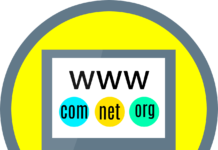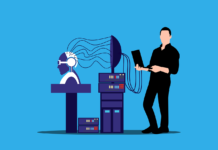What does a project engineer do in a business? Whether you are a product or service engineer, your role is to create new ideas, products, and innovations for businesses. This can be the most challenging and daunting task, especially in an ecosystem largely driven by digital technologies.
Everyone has the tools, but how you execute and use them makes the difference and allows you to retain your job longer. A lack of tools or poor usage can lead to mistakes that will lead to job loss or financial losses to the company. Instead of learning from the consequences of lacking the tools, you need to be prepared with a database of multiple tools.
Before you begin exploring this dynamic landscape of product development, ensure you have all these tools in your computer and work systems.

1. Design And Product Prototyping Tools
Being the best product engineer involves various roles, but the most defining one is the ability to create something unique and new from scratch. This requires that you have the best tool to help with the product prototyping.
Most ideas and products die at the prototyping stage, but with the right tool, you can create a product that goes into production. In addition to the tools, you need the best product engineering skills and experts to help you create a product worthy of business production.
There are many tools to consider, but not all will meet your needs. Expert help is needed to select the best system for product prototyping. A perfect system allows you to design and test virtually before producing the prototype.
Prototyping can be expensive and time-consuming. The best tools simplify the process, enabling you to get it right and minimize future changes. These tools are essential for idea, service, or workflow prototyping, which can be achieved virtually before direct implementation.

2. Communication And Project Collaboration Tools
As a product engineer, you will likely work with a large team. Be ready for the pressure and consequences. The team will take a toll on you, and they can affect your project success. Lack of communication will also affect your project deadline and quality controls.
Therefore, after deciding on the team you will be working with, you should create the best communication and collaboration system. This will enable you to communicate with everyone and monitor their progress through various project roles.
Email communication alone is insufficient, as are the teams and virtual meeting tools like Zoom. Make employees feel comfortable talking to you. Secondly, personalize communication by using other informal collaboration and communication tools.
Therefore, create a social media group, mainly WhatsApp, for everyone to share. Such communications can also help personalize communication to address everyone individually. Getting employees on their phones through WhatsApp is much easier than email, Slack, Jira, or Teams.

3. Research And Analytics Tools
Now that you have all the data you may need for the project, how do you decide on the next approach? This is why you need research and analytics tools mainly dedicated to helping you with decision-making. These tools can give you a vision picture of the reality you may never see while sitting in your office.
They tell you what the customers need, love, hate, or may prefer. These tools can also help you predict the future and your customers’ preferences. Finally, you can get all the details, like the exact customization, variations, and add-ons the clients need.
With all this in mind, designing and product development should be simple. The stress of figuring out what customers need no longer exists. Your role is to produce what customers desire or may need, but they do not know.
Have you ever wondered why product engineers create different versions of the same product? They rely on analytics tools that provide the best product options and variations based on the market and customer needs.
4. Simulation And Version Manipulation Tools
Creating the perfect product is not a one-time and smooth process. There are many corrections, and sometimes, you have to begin fresh or undo the changes.
Good engineers would prefer to track all these changes to understand what they did wrong and right. When you revert to the initial version, you need to keep some aspects that were added to improve the product. This will save you the burden of having to do everything afresh.
Next, you can lift what you need, undo what you don’t need, or revere the previous versions. This is why you should integrate the simulation and version control tools into your design and creativity process.
The simulation will help you see the errors and areas of success. Next, you can use the version control tools to undo the changes, introduce new ones, or go back to the original version and begin simulating everything again.
This back-and-forth is the key to creating the best products. It’s much better and easier if you have all the tools you need to track and store all the changes.

5. Product Lifecycle Management Tools
Where does the role of a product engineer end? Is it at the product development, design, modification, and creation stage? As a product development manager, you must be ready for a continual role that integrates product lifecycle management.
This means repeatedly designing, modifying, and creating new product versions. You can do all this if you have the best tools to monitor the product lifecycle and provide suggestions about customer interaction with the product.
Based on that, you can create a new product, modify an existing one, or create a new one. Before creating or modifying any product, invest in tools to help you monitor its performance. Such tools will help you create or modify a product to produce what is relevant to the market.
Bottomline
All these tools are a must-have regardless of the industry you operate in. You can add others to the portfolio based on your job’s uniqueness.
Secondly, the listed tools come in various variations; hence, you should select the one that is best for your design and product development agendas.



